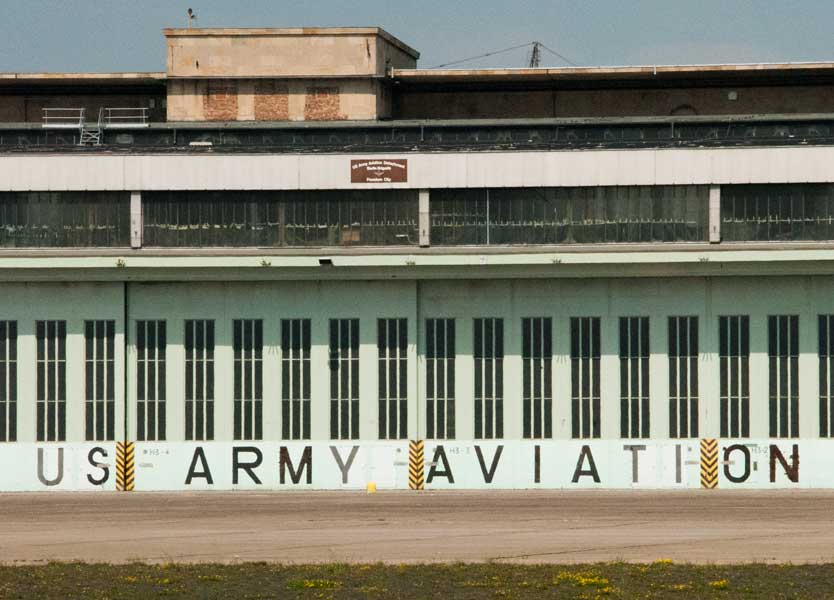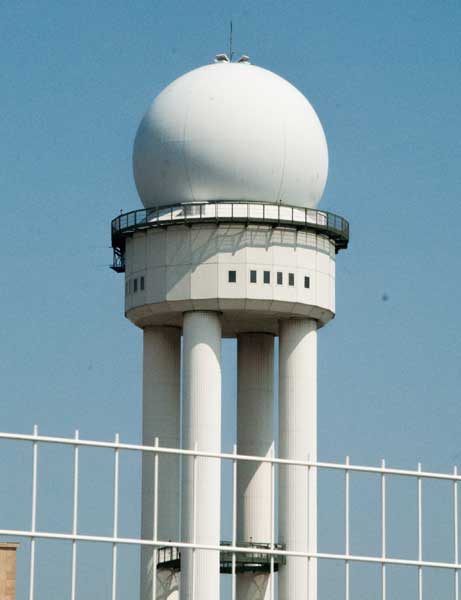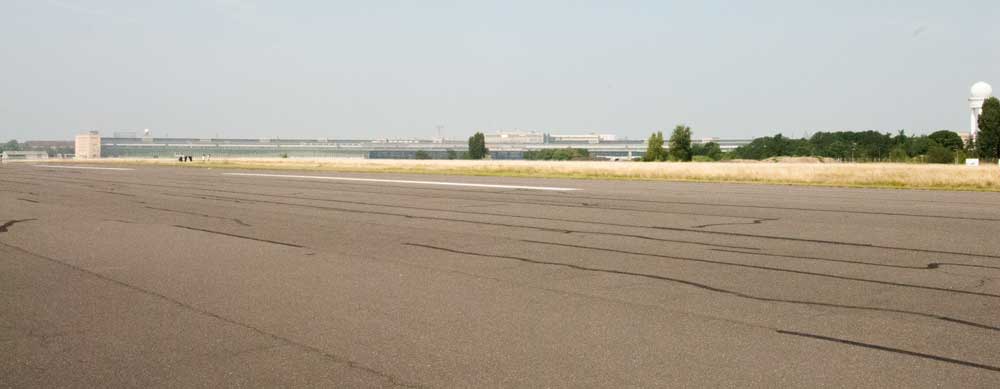
Distant view of vast terminal - from building on left to tower on right.
I wanted to see
Tempelhof Airport mainly because of the Berlin Airlift of 1948. The Soviets had blocked off all land access to West Berlin in an attempt to make that part of the city dependent on their supplying it and hopefully eventually forcing the allied powers to quit the city. The allies responded with a sustained and massive airlift and the Soviets ended the blockade a year later. The para below, from the Wikipedia link above, gives an idea of what had to be airlifted into the city every day.
And my friend Bob, who had been through Tempelhof just before it closed, has this to say about the interior of the terminal.
I was also not sure if I'd been to Tempelhof previously, probably not. In early 1992, en route from Dublin to Vilnius (Lithuania) on EBRD business, I had landed at one Berlin airport and got a taxi to another. I don't know which two of the three main airports were involved then. I'm told it was more likely Tegel & Schönefeld. So it's good to be in Tempelhof.
Incidentally it was through EBRD that I ended up sharing a dinner table in a posh Paris restaurant with Horst Kohler, then a German State Secretary and subsequently President of a united Germany. I also met, through the Bank, Miklos Nemeth, the former Hungarian Prime Minister whose opening of Hungary's borders was instrumental in the fall of the wall. These encounters made me more acutely aware of the whole east/west history during my stay in Berlin.
My friend Vivion also reminds me thatThe American military government, based on a minimum daily ration of 1,990 calories (July 1948), set a total of daily supplies needed at 646 tons of flour and wheat, 125 tons of cereal, 64 tons of fat, 109 tons of meat and fish, 180 tons of dehydrated potatoes, 180 tons of sugar, 11 tons of coffee, 19 tons of powdered milk, 5 tons of whole milk for children, 3 tons of fresh yeast for baking, 144 tons of dehydrated vegetables, 38 tons of salt and 10 tons of cheese. In all, 1,534 tons were required each day to sustain the over two million people of Berlin. Additionally, for heat and power, 3,475 tons of coal and gasoline were also required daily.
Vivion also drew my attention to The Chocolate Bomber. Well worth clicking on. And here's an interview with the pilot.The airlift was a logistical nightmare. Aircraft flew with a separation of four minutes. If you fluffed your landing approach you flew back to base - there was no possibility of inserting an aircraft into such a tight pattern. If an aircraft got stuck on the runway it was bulldozed off to avoid disrupting the line of aircraft on approach. Aircraft flew with minimum fuel to maximise the weight of cargo carried.
And my friend Bob, who had been through Tempelhof just before it closed, has this to say about the interior of the terminal.
He also gave me this photo he took at that time.The scale of the terminal inside is amazing, especially for a 1930's building, if you had been in it you would not forget. They had some aircraft hanging from the roof and there were more inside than outside that day. There are also some painted decorative elements left over from the original builders, in a politically inappropriate scheme, in some of the closed areas, amazing that they were never painted over.
I was also not sure if I'd been to Tempelhof previously, probably not. In early 1992, en route from Dublin to Vilnius (Lithuania) on EBRD business, I had landed at one Berlin airport and got a taxi to another. I don't know which two of the three main airports were involved then. I'm told it was more likely Tegel & Schönefeld. So it's good to be in Tempelhof.
Incidentally it was through EBRD that I ended up sharing a dinner table in a posh Paris restaurant with Horst Kohler, then a German State Secretary and subsequently President of a united Germany. I also met, through the Bank, Miklos Nemeth, the former Hungarian Prime Minister whose opening of Hungary's borders was instrumental in the fall of the wall. These encounters made me more acutely aware of the whole east/west history during my stay in Berlin.
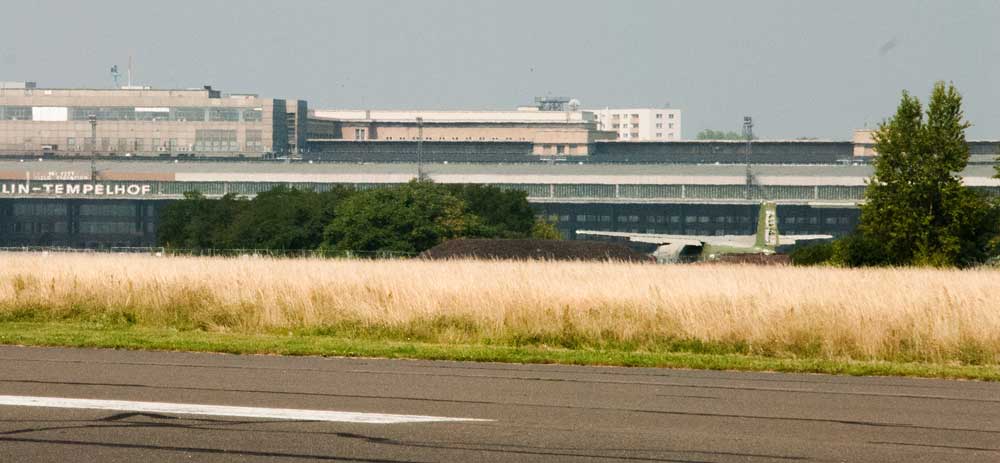
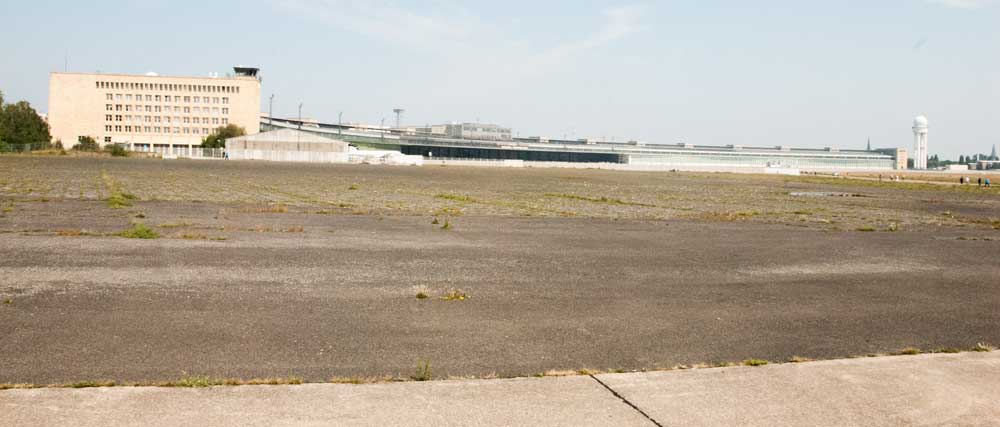
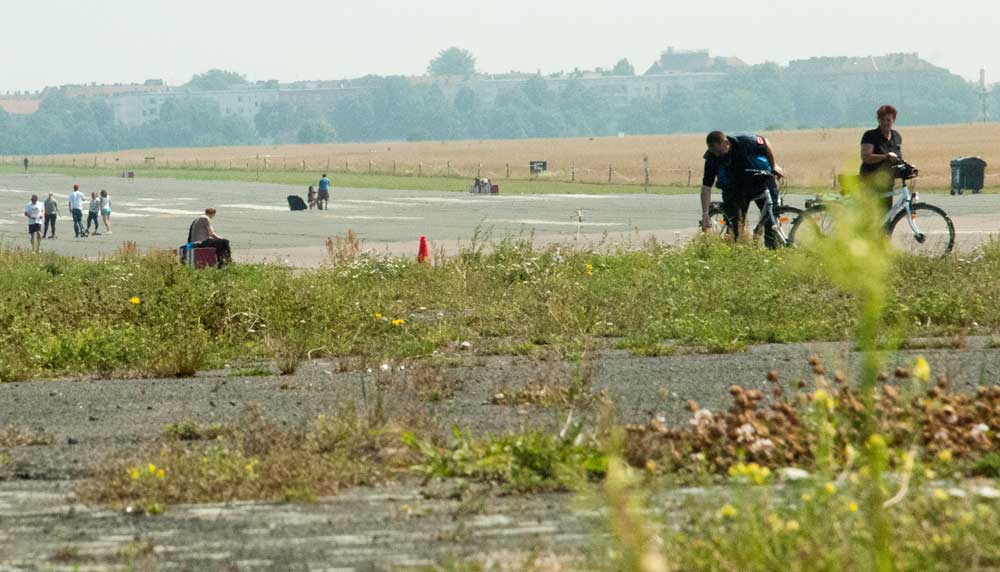
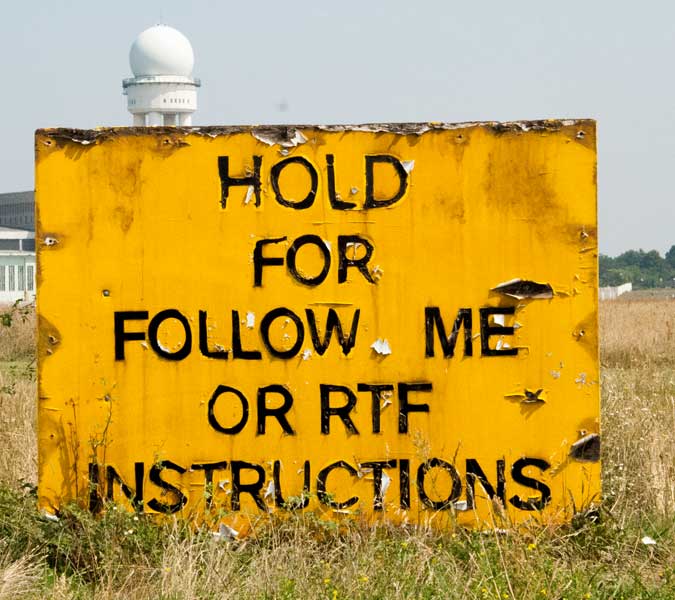
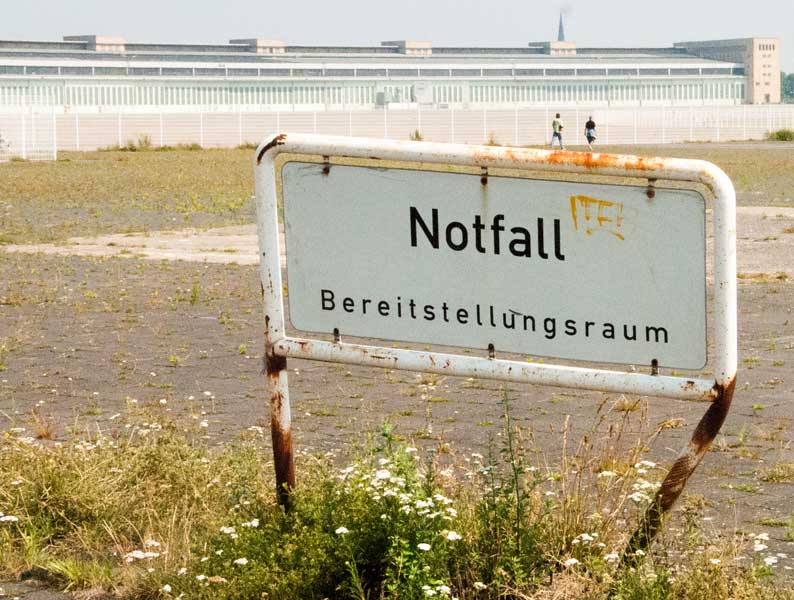
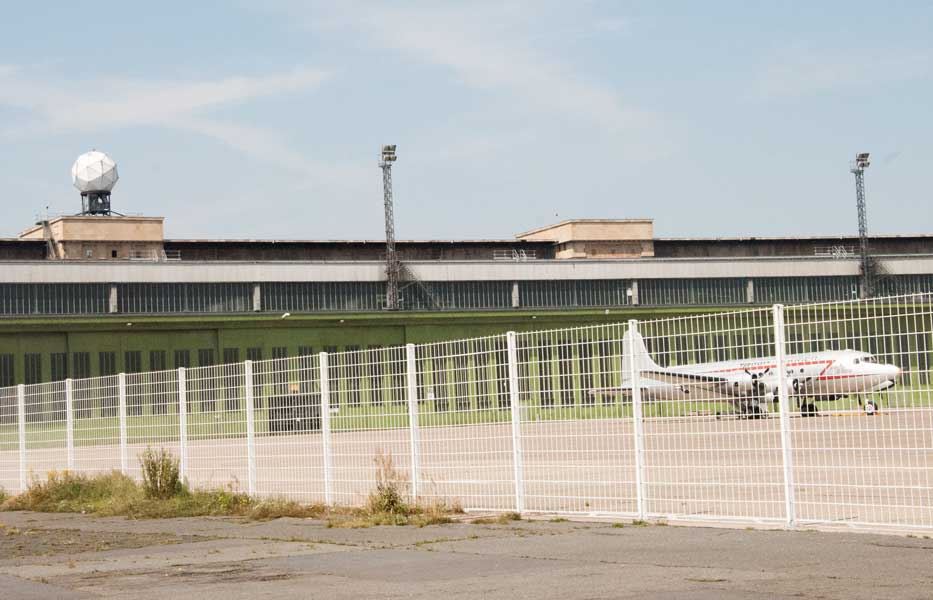
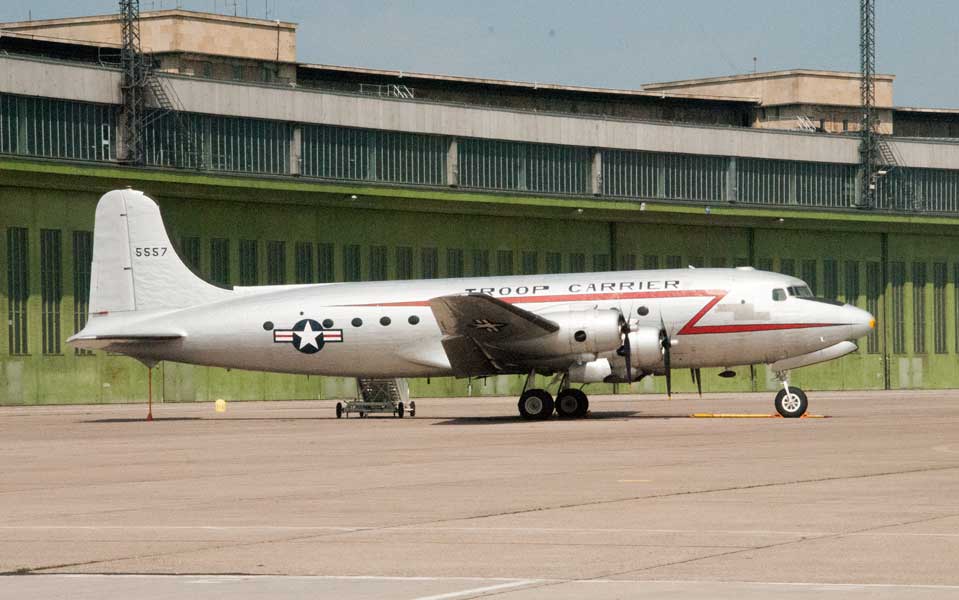 e
e